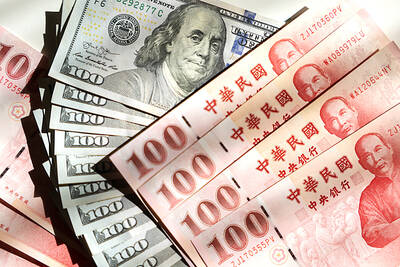Japan is pushing the limits of rail travel as it begins testing the fastest-ever shinkansen bullet train, capable of speeds of as much as 400kph.
Called the Alpha-X, the train is scheduled to go into service in 2030.
East Japan Railway Co, better known as JR East, plans to operate it at 360kph. That would make it 10kph faster than China’s Fuxing Hao, which links Beijing and Shanghai and has the same top speed.
To cope with massive wind resistance when entering tunnels, the Alpha-X’s first car would mostly be a sleek nose, measuring 22m. With just three windows, there looks to be hardly any space, if at all, for passengers in the front.
Painted in metallic silver with green stripes, the 10-car bullet train yesterday began test runs between the cities of Aomori and Sendai at night.
Japan’s bullet trains, which made their debut in the same year as the 1964 Tokyo Olympics, have become a symbol of the nation’s focus on efficiency and reliability.
Shinkansens are rarely late, even though they depart Tokyo Station every few minutes for Osaka, Kyoto and other destinations across the archipelago, making them a viable alternative to air travel.
The Alpha-X is a key part of a plan to offer faster services to Sapporo, the biggest city on the northernmost island of Hokkaido.
“The development of the next-generation shinkansen is based on the key concepts of superior performance, a high level of comfort, a superior operating environment and innovative maintenance,” JR East said in a statement.
Although the Alpha-X holds the title of the world’s fastest train right, it might already be dethroned by the time it goes into service. That is because a new maglev line is being built between Tokyo and Nagoya with operations starting in 2027.
Traveling mostly through deep tunnels, the magnetically levitated train is to travel at a top speed of 505kph, cutting the time between the two cities to 40 minutes from 110 minutes.
Stopping is just as important.
The new bullet train has air brakes on the roof and also use magnetic plates near the rails to slow down, in addition to conventional brakes.
The train has dampers and air suspension to keep it stable when traversing curves, maintaining its balance and comfort for passengers.
Alpha-X stands for “Advanced Labs for Frontline Activity in rail eXperimentation.”
The train is based on JR East’s E5 platform, which already operates on major routes in Japan.
JR East is to link data between the train, control center, maintenance facilities and staff to monitor performance and keep the trains operating at optimal levels.

MARKET LEADERSHIP: Investors are flocking to Nvidia, drawn by the company’s long-term fundamntals, dominant position in the AI sector, and pricing and margin power Two years after Nvidia Corp made history by becoming the first chipmaker to achieve a US$1 trillion market capitalization, an even more remarkable milestone is within its grasp: becoming the first company to reach US$4 trillion. After the emergence of China’s DeepSeek (深度求索) sent the stock plunging earlier this year and stoked concerns that outlays on artificial intelligence (AI) infrastructure were set to slow, Nvidia shares have rallied back to a record. The company’s biggest customers remain full steam ahead on spending, much of which is flowing to its computing systems. Microsoft Corp, Meta Platforms Inc, Amazon.com Inc and Alphabet Inc are

Luxury fashion powerhouse Prada SpA has acknowledged the ancient Indian roots of its new sandal design after the debut of the open-toe footwear sparked a furor among Indian artisans and politicians thousands of miles from the catwalk in Italy. Images from Prada’s fashion show in Milan last weekend showed models wearing leather sandals with a braided design that resembled handmade Kolhapuri slippers with designs dating back to the 12th century. A wave of criticism in the media and from lawmakers followed over the Italian brand’s lack of public acknowledgement of the Indian sandal design, which is named after a city in the

The US overtaking China as Taiwan’s top export destination could boost industrial development and wage growth, given the US is a high-income economy, an economist said yesterday. However, Taiwan still needs to diversify its export markets due to the unpredictability of US President Donald Trump’s administration, said Chiou Jiunn-rong (邱俊榮), an economics professor at National Central University. Taiwan’s exports soared to a record US$51.74 billion last month, driven by strong demand for artificial intelligence (AI) products and continued orders, with information and communication technology (ICT) and audio/video products leading all sectors. The US reclaimed its position as Taiwan’s top export market, accounting for

INVESTOR RESILIENCE? An analyst said that despite near-term pressures, foreign investors tend to view NT dollar strength as a positive signal for valuation multiples Morgan Stanley has flagged a potential 10 percent revenue decline for Taiwan’s tech hardware sector this year, as a sharp appreciation of the New Taiwan dollar begins to dent the earnings power of major exporters. In what appears to be the first such warning from a major foreign brokerage, the US investment bank said the currency’s strength — fueled by foreign capital inflows and expectations of US interest rate cuts — is compressing profit margins for manufacturers with heavy exposure to US dollar-denominated revenues. The local currency has surged about 10 percent against the greenback over the past quarter and yesterday breached